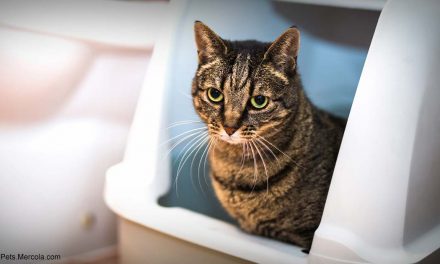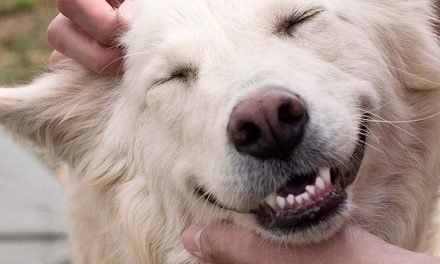Sadly, lots of pet dogs today are susceptible to stress and anxiety, and research study recommends that the tension of coping with a worry or stress and anxiety condition can adversely impact pets’ ’ health and even the length of time they live.1
When a pet feels distressed, his body launches an extreme quantity of norepinephrine, the battle or flight hormonal agent, which can change gut germs and disrupt intestinal (GI) system motility.2 This flood of norepinephrine can lead to physical signs like diarrhea, and when a housetrained pet dog has a mishap inside your home, it just heightens his tension.
Some pet dogs experience brief episodes of tension, while others suffer persistent tension. The more you learn about what activates your family pet’’ s stress and anxiety, the habits he tends to carry out when he ’ s nervous, and the result of tension on his health, the much better able you’’ ll be to recognize the indications and act to decrease or remove stress factors.
It’’ s likewise crucial to acknowledge that while from your really human perspective, the environment you attend to your pet is worry-free, pet stress factors can be rather various from human stress factors.
.8 Common Canine Stress Triggers.
Some of the causes of tension in pets are species-specific, while others are sets off that can trigger stress and anxiety in human beings. And similar to delicate individuals, delicate pets tend to be more prone to tension. Some typical triggers consist of:
.Abrupt loud sounds (e.g., fireworks, thunderstorms) Punishment-based training approaches including shouting, striking, shock collars, and so on. Unfavorable relationships with other animals or people in the home Unwanted attention such as being arbitrarily awakened from a nap, or being by force hugged, kissed or held Lack of chances to reveal typical types- and breed-specific habits such as running, recovering, searching, herding, and so on. Direct exposure to the unknown and odd (things, animals, individuals, and so on) Changes in real estate, home regimen, or family members Separation from relative, consisting of other family pets.
As you try to recognize the triggers for your canine’’ s stress and anxiety, likewise consider her history. If you embraced her as an adult, what do you understand about her past? Was she mistreated or overlooked ? Is she nervous primarily around kids or guys? Other pets?
Thorough and proper socializing happening in between 3-14 weeks likewise plays into how a pet dog copes and manages stress factors throughout life. It can adversely impact his capability to cope with life experiences going forward if your puppy had insufficient or bad social experiences throughout this essential delicate duration. Lots of canines do not have the coping abilities essential to successfully handle tension and stress and anxiety due to early-age experiences (or absence of experiences).
Some of the important things that trigger stress and anxiety in pet dogs can be inevitable, such as thunderstorms or a relocate to a brand-new house. There are numerous things you can manage to decrease tension and enhance your canine’’ s quality of life. Examples:
.Usage just relationship-centered, fear-free habits training/trainers. Assist everybody in the household comprehend and appreciate your pet dog’s requirement for continuous sleep and human handling he feels comfy with. Increase your pet’’ s day-to-day exercise level, because the huge bulk of pets, specifically big types, put on’’ t get almost enough. Daily motion is incredibly crucial in alleviating your canine’’ s tension reaction. Pet dogs left alone for numerous hours throughout the day get bored and lonesome. If there’s frequently nobody house to keep your pet business, hire a good friend or next-door neighbor or work with a pet dog walker to take him for a walk around the block, at a minimum. An option is doggy day care. Take part in brain video games, sniffaris or nose deal with a day-to-day basis. The majority of pets are psychologically under-stimulated. Offering canines enjoyable tasks, jobs and psychological workouts that engage their senses promotes much healthier brain chemistry and more well balanced habits. If Your Dog is Anxious, how to Tell.
Estimates are that about 30% of canines reveal indications of stress and anxiety, recognized by either body movement or habits such as compulsive licking. Because each pet dog has his own interaction design, it’’ s essential to discover your family pet ’ s signals that he’’ s feeling stressed out or anxious. There are lots of indications of stress and anxiety in canines, and they can alter with time. A few of them consist of:3
Lowered or tucked tail
Trembling/shaking
Ears pulled or pinned back
Increased whining, barking and/or growling
Yawning or panting
Diarrhea
Nose or lip licking
Reduced or missing cravings
Cowering, bent body posture and/or hiding
Destructive habits
If your canine is revealing several indications that he’’ s nervous, I highly motivate you to make a visit with your vet for a health examination. It’’ s essential to eliminate a hidden medical condition that might be the reason for or a factor to the stress and anxiety.
.Recommendations to Help Calm an Anxious Dog.
1. Make certain your pet dog gets lots of workout, playtime, psychological stimulation, attention and love. Daily energetic workout is among the most neglected, efficient and totally free treatments for decreasing tension that really couple of family pet moms and dads make the most of. Pets require strenuous physical and psychological workout every day.
2. Think about including a probiotic supplement or fermented veggies to your pet’’ s fresh, nutritionally ideal, species-specific entire food diet plan, as research studies reveal probiotics decrease stress-related GI disruptions in canines, develops the microbiome and favorably affects the gut-brain axis.
3. When your canine will be house alone, leave him with a post of clothes or blanket with your aroma on it and a treat-release toy, location little deals with and his preferred toys around your house for him to find, and place on some relaxing doggy music prior to you leave.
4. Play calm, relaxing music prior to a possible stress factor takes place. This might unwind your pet and have actually the included bonus offer of hushing stressful sounds.
5. Include a flower essence mix like Solutions Safe Space for Dogs to her drinking water and buy an Adaptil scent collar or diffuser.
6. Speak with an integrative vet about natural and TCM (conventional Chinese medication) treatments, Rescue Remedy, or other particular Bach flower solutions that might be handy in relieving your pet dog’s periodic tension. Products I utilize, constantly in combination with habits adjustment, consist of natural aconitum (or whatever solution fits the signs best), Hyland’s Calms Forte or soothing milk proteins (range of brand names).
Calming nutraceuticals and herbs that can be of advantage consist of holy basil, ashwagandha, rhodiola and l-theanine. In one animal design research study, Bacopa had anti-anxiety results similar to prescription medication.4
7. If your pet dog reacts well to pressure used to her body, purchase a wrap like the Thundershirt; likewise think about Ttouch, a particular massage strategy that can assist nervous animals.
8. If your pet’s stress and anxiety appears to be worsening rather of much better, think about a customized technique to handling her tension by enabling her to select what finest relieves her by means of used zoopharmacognosy (self-healing methods used through a qualified expert).
9. If you’ve embraced a canine who might have had a rocky start in life, I extremely suggest a program called A Sound Beginning , which is created to assist rescue canines and their adopters discover to interact successfully and form a solid bond.
10. When occasions happen, work with a force-free behaviorist or fitness instructor to assist recognize stress and anxiety triggers and establish a habits repatterning procedure that can assist decrease the level of tension your pet experiences. Some excellent resources to examine are:
Certification Council for Professional Dog Trainers (C.C.P.D.T.)
International Association of Animal Behavior Consultants (I.A.A.B.C.)
.Sources: PetMD August 8, 2019 .
Read more: healthypets.mercola.com






Recent Comments